In a global scenario where sustainability and environmental responsibility have become urgent agendas, the issue of excess plastics on the planet emerges as one of the most pressing and complex challenges of our era. What was once celebrated as a revolutionary, versatile, and low-cost material has become a symbol of the environmental crisis, with its consequences echoing in every corner of the globe, from the depths of the oceans to the most remote mountain peaks, and even inside the human body. The ubiquity of plastic in our daily lives, combined with a linear production and consumption model that prioritizes disposal, has generated a mountain of waste that the planet simply cannot absorb. Millions of tons of plastic are produced annually, and an alarming portion of this volume ends up polluting ecosystems, harming wildlife, and increasingly impacting human health. The urgency of finding effective solutions to this crisis is undeniable, requiring a multifaceted approach that involves everything from redefining our consumption habits to technological innovation and the formulation of ambitious public policies. This article sets out to delve into the depths of this crisis, exploring the rise of plastic, its devastating impacts, the reduction and reuse strategies, the advances and challenges of recycling, the innovations in alternative materials, the crucial role of public policies, and finally, individual and collective responsibility in building a future where plastic is no longer a threat, but rather a resource managed in a circular and sustainable way.
The Rise of Plastic: An Innovation with Unintended Consequences
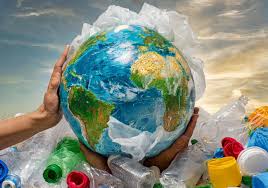
The history of plastics is, at its core, a narrative of innovation and progress that, paradoxically, culminated in one of the greatest environmental crises of our time. Since its invention in the nineteenth century and its massive popularization from the middle of the twentieth century, plastic has been hailed as a miraculous material, capable of shaping the future of industry and consumption. Its versatility, durability, lightness, and low cost of production have made it indispensable in virtually every sector of the economy, from food and beverage packaging to the manufacturing of automotive, electronic, medical, and textile components. Plastic’s ability to be molded into countless shapes and to resist degradation for long periods of time has made it the preferred choice for a multitude of applications, driving convenience and affordability at an unprecedented pace. Global plastic production has skyrocketed from 2 million tons in 1950 to more than 400 million tons annually today, with projections that this number could quadruple by 2050 [1, 2]. This meteoric rise, however, has been accompanied by a series of unintended and, in many cases, devastating consequences for the environment and human health.
The linear production and consumption model, which dominates the global economy, is one of the main catalysts for the plastic crisis. In this model, resources are extracted, transformed into products, used, and then discarded, without considering the complete life cycle of the material. For plastic, this approach translates into a vast amount of single-use products – packaging, bags, cutlery, cups – that are used for a few minutes and persist in the environment for hundreds of years. The global plastic recycling rate is alarmingly low, with only about 9% of all plastic ever produced having been recycled [3]. The rest ends up in landfills, incinerators, or, even more worryingly, leaking into the environment, polluting soils, rivers, and oceans. The durability that was once a virtue of plastic has become its greatest environmental curse, as it does not biodegrade easily, but fragments into smaller and smaller pieces, known as microplastics and nanoplastics, which infiltrate all ecosystems and the food chain.
The ubiquity of plastic is also intrinsically linked to our dependence on fossil fuels. The vast majority of plastic is produced from oil and natural gas, which means that its production contributes significantly to greenhouse gas emissions and climate change [4]. In addition, the plastic manufacturing process involves the use of various chemical additives, such as plasticizers, stabilizers, and dyes, many of which are toxic and can leach into the environment or food, posing risks to human health [5]. The promise of convenience and progress that plastic offered in the last century now comes face to face with the harsh reality of a planet overwhelmed by its waste. The rise of plastic, although it has driven advances in several areas, has bequeathed us an environmental challenge of global proportions, requiring a profound reassessment of our relationship with this material and the urgent search for solutions that mitigate its impacts and pave the way for a more sustainable future.
The Devastating Impacts of Plastic on the Environment and Human Health
The uncontrolled proliferation of plastic on the planet has triggered a series of devastating impacts that profoundly affect natural ecosystems and pose a growing threat to human health. The durability and strength of plastic, characteristics that have made it so valuable to industry, are precisely what make it a persistent and ubiquitous pollutant. It is estimated that millions of tons of plastic waste leak into the oceans annually, forming vast islands of garbage and spreading to every corner of the marine environment, from the most remote beaches to the deepest ocean trenches [6].
Impacts on Wildlife and Ecosystems
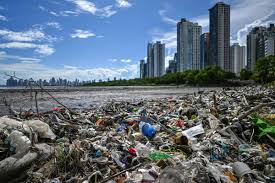
Marine animals are particularly vulnerable to plastic pollution. Ingestion of plastic fragments, which are often mistaken for food, can cause digestive blockages, malnutrition, internal injury, and in many cases, death [7]. Sea turtles, shorebirds, fish, and marine mammals are often found entangled in abandoned fishing nets, plastic bags, and other debris, resulting in suffocation, drowning, and an inability to feed or escape predators [8]. In addition to ingestion and entanglement, plastics also act as vectors for the dispersal of invasive species and pathogens, which can adhere to debris and be transported to new areas, unbalancing fragile ecosystems [9].
Microplastics, plastic particles less than 5 millimeters in diameter, pose an even more insidious threat. Formed by the fragmentation of larger plastics or intentionally produced (such as microbeads in cosmetics), they are ubiquitous in the environment, found in agricultural soils, rivers, lakes, oceans, and even the atmosphere [10]. These tiny fragments are easily ingested by a wide range of organisms, from zooplankton at the base of the food chain to large predators, accumulating in tissues and transferring along the food chain. In addition to the physical impacts, microplastics can adsorb chemical pollutants present in the environment, such as PCBs and DDT, and release them into the organisms that ingest them, amplifying toxicity [11].
Impacts on Human Health
Concern about the impacts of plastic on human health has grown exponentially. The presence of microplastics and nanoplastics has been detected in a variety of human tissues and organs, including lungs, blood, placenta, and even breast milk [12, 13]. While the long-term effects are still being investigated, preliminary studies suggest that exposure to these plastics may be associated with a range of health problems. The chemical additives present in plastics, such as phthalates and bisphenol A (BPA), are known to be endocrine disruptors, interfering with the hormonal system, and can cause reproductive problems, metabolic disorders, neurodevelopment, and increased risk of certain cancers [14, 15].
Inhalation of microplastics present in the air, especially indoors, is also a growing concern, with potential impacts on respiratory health. The production, transportation, and disposal of plastics also contribute to air, water, and soil pollution, affecting communities near production facilities and landfills [16]. The incineration of plastic waste, a common practice in some regions, releases toxic gases and fine particles into the atmosphere, contributing to air pollution and respiratory problems. In short, plastic, which was once seen as a symbol of progress, has turned out to be a double-edged sword, whose environmental and human health impacts require an urgent reassessment of our relationship with this material and the implementation of comprehensive solutions to mitigate its devastating effects.
## Reduction and Reuse Strategies: The First Step to a Plastic-Free Planet
Given the magnitude of the plastic crisis, the most immediate and effective response lies in implementing robust reduction and reuse strategies. Before even thinking about recycling or new technologies, it is essential to attack the root of the problem: the excessive production and consumption of plastic, especially single-use plastic. The philosophy of the ‘3 R’s’ – Reduce, Reuse and Recycle – although known, needs to be revitalized and applied urgently, with clear priority in the first two ‘R’s’. Reducing plastic consumption starts with individual and collective awareness of the unnecessity of many plastic items in our daily lives. This implies rethinking buying habits and opting for alternatives that do not involve excessive packaging or disposable products.
Reduction at Source: Less Plastic at Source
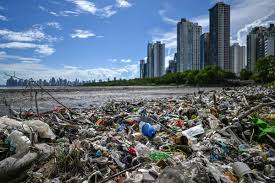
Reduction at the source is the most impactful strategy, as it aims to reduce the amount of plastic that enters the consumption cycle. This involves both consumer responsibility and that of industry and policymakers. For the consumer, it means adopting practices such as: taking reusable bags for shopping, refusing disposable plastic straws and cutlery, opting for bulk products or with minimal packaging, and choosing durable items instead of disposable ones [17]. The industry, in turn, has a crucial role in redesigning products and packaging to be more sustainable, using less plastic, or replacing it with alternative and renewable materials. This includes innovation in packaging that is edible, compostable, or made from recycled and recyclable materials more efficiently. Consumer pressure for more sustainable products can drive this change in the production chain. Additionally, government policies that prohibit or restrict the use of single-use plastics, such as bags and cups, have been shown to be effective in reducing consumption by encouraging the transition to reusable alternatives [18].
Reuse: Extending the Life of Plastic
Reuse is the second most important strategy and consists of giving plastic products a new life, preventing them from becoming waste prematurely. This can be done in several ways, from the use of reusable water bottles and cups to the adoption of refill systems for hygiene and cleaning products. The culture of ‘reuse’ challenges the ‘use and throw away’ mentality, promoting more conscious and responsible consumption. Companies are starting to invest in business models based on reuse, such as returnable packaging systems for food and beverages, or offering durable products that can be repaired and reused for a long time [19]. The implementation of infrastructure to facilitate reuse, such as drinking water refill stations in public spaces and collection points for returnable packaging, is critical to the success of this strategy. Reuse not only reduces the demand for virgin plastic, but also decreases the amount of waste that needs to be managed, relieving pressure on landfills and incinerators. In addition, by extending the shelf life of products, reuse contributes to reducing the carbon footprint associated with the production of new materials. The combination of individual efforts, industrial innovations, and public policies supporting reduction and reuse is the most promising path to slowing down the flow of plastic on our planet and building a more sustainable future.
The Recycling Revolution: Advances and Challenges in the Circular Economy of Plastics
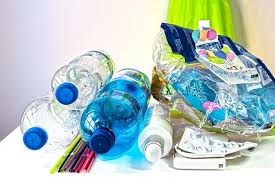
While reduction and reuse are the most effective strategies to tackle the plastic crisis, recycling plays a complementary and crucial role in the transition to a circular economy. Recycling allows plastic, which has already been produced and used, to be reintroduced into the production chain, preventing it from becoming waste and reducing the need to produce virgin plastic. However, plastic recycling is a complex and challenging process, which has faced numerous obstacles over the years. The low global recycling rate, which is around 9%, is a reflection of these difficulties, which range from inefficient collection and separation to the complexity of different types of plastics and the contamination of materials [20].
Challenges of Traditional Recycling
Mechanical recycling, the most common method, involves collecting, sorting, washing, grinding, and extruding the plastic into new products. However, this process is limited by the diversity of plastic polymers, which are often not compatible with each other and can degrade their properties with each recycling cycle. Contamination by other materials or by different types of plastic also compromises the quality of the recycled material, limiting its applications and market value [21]. In addition, the collection and sorting infrastructure is often inadequate, resulting in a large amount of plastic not reaching recycling plants. The lack of economic incentives and low demand for recycled products are also significant barriers to the expansion of mechanical recycling.
Advances in Chemical Recycling and Emerging Technologies
Despite the challenges, the recycling revolution is underway, driven by significant advances in chemical recycling and the development of emerging technologies. Chemical recycling, also known as advanced recycling, offers a promising solution for overcoming the limitations of mechanical recycling. Instead of just grinding and melting plastic, chemical recycling breaks down polymers into their original monomers or other smaller molecules, which can be used as feedstock for the production of new, high-quality virgin plastics [22]. This allows you to recycle mixed or contaminated plastics that would be impossible to recycle mechanically, and the resulting material can be used in high-value applications such as food packaging and medical products.
There are different approaches to chemical recycling, including pyrolysis (which converts plastics into oils and gases), gasification (which produces syngas from plastics), solvolysis (which uses solvents to dissolve and purify polymers), and depolymerization (which breaks polymers into their monomers) [23]. Companies and startups around the world are investing heavily in these technologies, with the goal of creating a truly closed loop for plastic, where the material can be recycled infinite times without loss of quality. In addition to chemical recycling, other emerging technologies are contributing to the recycling revolution. Robotic sorting and artificial intelligence are optimizing the separation of different types of plastic in recycling centers, increasing the efficiency and purity of the recycled material [24]. Biorecycling, which uses microorganisms or enzymes to degrade plastics, is another promising area of research, offering a more sustainable and low-environmental impact approach [25].
Recycling in the Circular Economy
In the circular economy, recycling is not seen as the end of the line for plastic, but rather as a crucial step in keeping the material in use for as long as possible. For recycling to be truly effective in a circular model, it is critical that products are designed from the ground up to be recyclable, using compatible materials and minimizing packaging complexity. Collaboration between all links in the value chain – from polymer and product manufacturers to consumers and recycling companies – is essential to creating an efficient and cost-effective recycling system. The valorization of recycled material, through incentive policies and the demand for products with recycled content, is also crucial to boost the circular economy of plastic. While recycling alone is not the complete solution to the plastic crisis, advances in chemical recycling and other technologies, combined with a commitment to the circular economy, offer a promising path to transforming plastic from an environmental problem into a valuable and sustainable resource.
Innovation and Alternatives: Unraveling Sustainable Materials and Technologies
While reduction, reuse, and recycling are key pillars to tackling the plastic crisis, innovation in the creation of alternative materials and sustainable technologies is equally crucial to pave the way for a truly pollution-free future The search for substitutes for conventional plastic, which offer the same functionalities without negative environmental impacts, has driven a wave of research and development on several fronts. These innovations aim not only to replace plastic in its current applications, but also to rethink the design of products and systems to minimize reliance on disposable materials.
Bioplastics and Biodegradable Materials
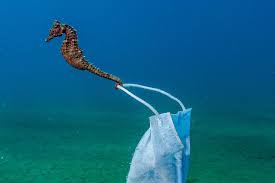
One of the most promising areas is the development of bioplastics, which are polymers derived from renewable sources such as corn starch, sugarcane, cellulose, vegetable oils, and algae [26]. Unlike conventional plastics, which are produced from fossil fuels, bioplastics can have a significantly lower carbon footprint and, in some cases, are biodegradable or compostable. It is important to note that not all bioplastic is biodegradable, and not all biodegradable material decomposes in any environment; Compostability, for example, often requires specific industrial composting conditions [27]. However, bioplastics such as PLA (polylactic acid) and PHA (polyhydroxyalkanoates) are gaining ground in packaging, disposable utensils, and even medical applications, offering a more sustainable alternative to traditional plastic [28]. Research continues to improve the properties of these materials, seeking greater strength, durability and biodegradation capacity in different environments.
Natural and Innovative Materials
In addition to bioplastics, nature offers a wide range of materials that can serve as alternatives to plastic. Bamboo, for example, is a rapidly renewable resource that can be used in the manufacture of utensils, packaging, and even building components [29]. Wood, glass, and metal are durable, recyclable materials that can replace plastic in many applications, especially in packaging and long-term products [30]. Innovation is also exploring less conventional materials, such as fungal mycelium, which can be grown to form packaging and insulators with properties similar to Styrofoam but fully biodegradable [31]. Other research is focused on developing materials from agricultural waste, such as fruit and vegetable peels, which can be made into edible or compostable films and packaging [32].
Design Technologies and Reuse Systems
Innovation is not just limited to materials; It extends to product and system design. Ecodesign, which considers the complete life cycle of a product, from the extraction of the raw material to disposal, is essential to minimize the environmental impact of plastic. This includes designing for durability, repairability, reusability, and recyclability, ensuring that products are easy to disassemble and that their components can be recovered and reused [33]. Innovation in reuse systems is also crucial. Business models based on refills and returnable packaging, such as those that already exist for glass bottles, are being expanded to a variety of products, from food and beverages to cleaning and personal care products [34]. These initiatives require a change in distribution infrastructure and consumption habits, but they offer a promising avenue to drastically reduce the amount of single-use plastic. The combination of new materials, smart design, and efficient reuse systems is the key to decoupling our economic growth from the production and overconsumption of plastic, building a future where innovation serves sustainability and not the other way around.
Public Policies and Global Agreements: Building a Future Free of Plastic Pollution
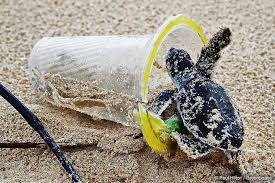
Tackling the global plastics crisis requires more than individual efforts and technological innovations; It requires coordinated and ambitious action at the government level, through the formulation and implementation of effective public policies and the conclusion of binding global agreements. The complexity and scale of the plastic pollution problem transcends national borders, making international cooperation an imperative for building a truly plastic-free future. Several countries and economic blocs are already implementing legislation to combat plastic excess, with a focus on reducing the use of single-use plastics, increasing recycling rates, and promoting the circular economy.
National and Regional Legislation
At the national and regional level, public policies have focused on different approaches. Many countries and cities have implemented bans or restrictions on the use of single-use plastics, such as plastic bags, straws, cups, and cutlery. Notable examples include the European Union, which banned a number of single-use plastic products as of 2021, and several states and municipalities in Brazil that have adopted similar legislation [35, 36]. These bans aim to reduce the demand for these items and encourage the transition to reusable alternatives. Another common approach is the implementation of extended producer responsibility (EPR) systems, which make manufacturers responsible for the full life cycle of their products, including post-consumer collection and recycling [37]. REP encourages companies to design more sustainable products and invest in recycling infrastructure, as the costs of waste management fall on them. In addition, tax incentives and subsidies for companies that use recycled materials or produce sustainable alternatives to plastic have been explored as a way to stimulate innovation and the transition to a more circular economy [38].
Global Agreements and Treaties
The need for a global response to the plastic crisis has led to the discussion and negotiation of a legally binding international treaty on plastic pollution. In March 2022, the United Nations Environment Assembly (UNEA-5.2) adopted a landmark resolution to begin negotiations on an international instrument to end plastic pollution, with the aim of concluding negotiations by the end of 2024 [39]. This treaty has the potential to be a milestone in global environmental governance, addressing the full life cycle of plastic, from production to disposal, and promoting international cooperation for the reduction of plastic pollution in all environments, including marine. The objectives of the treaty include promoting the circular economy, developing global standards for plastic products, facilitating technology transfer, and providing financial assistance to developing countries [40].
Other global initiatives, such as the Ellen MacArthur Foundation’s **New Plastics Economy**, have played a crucial role in raising awareness and mobilizing businesses and governments to transition to a circular model for plastics [41]. These initiatives promote collaboration between different stakeholders to redesign packaging, increase reuse and recycling, and eliminate problematic plastics. The implementation of effective public policies and the celebration of global agreements are essential to create a regulatory and economic environment that favors the reduction, reuse, and recycling of plastic on a global scale. Without a robust governance structure and firm political commitment, individual efforts and technological innovations, important as they are, will have a limited impact in the face of the magnitude of the problem. Building a future free of plastic pollution is a collective challenge that requires a collective and ambitious response.
The Role of Civil Society and Consumers: Transforming Habits for Positive Impact
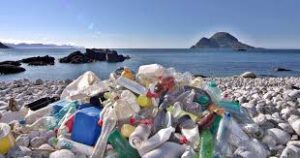
While public policies and technological innovations are crucial to tackling the plastic crisis, the active engagement of civil society and the transformation of individual consumption habits are equally indispensable for building a future free of plastic pollution. Consumer demand for more sustainable products and pressure from non-governmental organizations (NGOs) and social movements have the power to drive significant change in the industry and policymaking. Awareness is the first step towards change. As more people understand the devastating impacts of plastic on the environment and health, the motivation to adopt more sustainable practices is increasing. Environmental education campaigns, documentaries, articles, and social media play a vital role in disseminating information and mobilizing society.
The Power of the Conscious Consumer
The consumer has immense power to influence the market through their purchasing choices. Opting for products with less packaging, choosing reusable alternatives, prioritizing brands that demonstrate commitment to sustainability, and avoiding single-use products are actions that, together, send a clear signal to the industry that the demand for sustainable solutions is real and growing [42]. The Zero Waste movement is an example of how changing individual habits can have a significant collective impact. By seeking to reduce waste generation as much as possible, including plastic, Zero Waste supporters demonstrate that it is possible to live with less waste and inspire others to follow the same path [43]. In addition to purchasing choices, consumers can act as an agent of change by demanding that governments and companies adopt more responsible practices. This can be done through petitions, participation in public consultations, support for legislation aimed at reducing plastic, and engagement in awareness campaigns.
The Role of Organized Civil Society
Organized civil society, through NGOs, associations and social movements, plays a key role in the fight against plastic pollution. These organizations work on several fronts: advocacy and lobbying with governments and companies to create stricter policies and adopt more sustainable practices; **research and monitoring** of plastic pollution, providing data and scientific evidence to support decision-making; **education and awareness** of the population about the impacts of plastic and the solutions available; and **direct actions**, such as beach and river cleanups, which in addition to removing garbage, serve as tools for awareness and mobilization [44].
Initiatives such as **Break Free From Plastic,’ a global coalition of more than 2,000 organizations and 11,000 individuals, exemplify the power of collective action. This coalition has been instrumental in exposing the most polluting companies, promoting reuse-based solutions, and advocating for a binding global treaty on plastics [45]. The pressure exerted by these groups has led large corporations to rethink their packaging strategies and invest in more sustainable alternatives. Collaboration between civil society, the private sector, and governments is essential to create an ecosystem where reducing plastic is a shared priority. By transforming individual habits and amplifying the collective voice, civil society and the consumer can be the driving force behind the change needed to build a future where plastic is a valued resource and not a threat to our planet.
Case Studies and Successful Initiatives: Inspirations for Global Action

Despite the magnitude of the challenge that excess plastics pose, numerous case studies and successful initiatives around the world demonstrate that change is possible and that innovative solutions are emerging. These examples serve as inspiration and proof that with collaboration, creativity, and commitment, we can build a future with less plastic. From large ocean cleanup projects to small communities adopting the Zero Waste model, the diversity of approaches reflects the complexity of the problem and the need for solutions adapted to different contexts.
Ocean and River Cleanup: Removing Plastic from the Environment
One of the best-known initiatives in the fight against plastic pollution in the oceans is the **The Ocean Cleanup** project. Founded by Boyan Slat, this organization has developed innovative technologies to remove plastic accumulated in major ocean gyres, such as the Great Pacific Garbage Patch, and also to intercept plastic in rivers before it reaches the ocean [46]. Its floating barrier systems, which concentrate garbage to facilitate collection, and the “Interceptors”, which are autonomous vessels designed to extract plastic from rivers, represent a significant advance in the removal of waste already present in the environment. While cleanup is only one part of the solution – prevention is key – these initiatives are crucial to mitigating the immediate damage to marine ecosystems and to raising public awareness of the scale of the problem.
Other river and coastal clean-up projects, often led by volunteers and local communities, also play a vital role. UN Environment’s Clean Seas Initiative, for example, mobilizes governments, businesses, and individuals to drastically reduce plastic pollution, focusing on cleanup actions and promoting prevention policies [47]. These direct actions not only remove trash but also educate communities on the importance of correct disposal and reducing plastic consumption.
Innovation in Products and Business Models
Companies around the world are responding to the demand for more sustainable solutions by developing innovative products and business models. **Loop**, a global shopping platform that offers products from well-known brands in durable and reusable packaging, is an example of how the circular economy can be implemented on a large scale [48]. Consumers buy the products, use them and return the empty packaging, which is cleaned and replenished, eliminating the need for single-use packaging. This model demonstrates that convenience and sustainability can go hand in hand.
In the packaging sector, innovation in alternative materials and sustainable designs is constant. Companies are developing edible packaging made from algae, which can replace sauce sachets or water capsules. Others are investing in paper and cardboard packaging with improved barriers for liquids and fats, making them more versatile and recyclable [50]. The fashion industry is also engaging, with brands using recycled plastic to create clothing and accessories, turning waste into valuable products, and reducing demand for virgin fibers [51].
Zero Waste Cities & Communities

At the local level, the Zero Waste Cities movement has been gaining momentum, with communities and municipalities adopting comprehensive strategies to reduce waste generation to near zero. This involves implementing composting programs, door-to-door recycling, incentives for reducing consumption, and promoting markets for bulk and reusable products [52]. The city of San Francisco is a notable example, having achieved a landfill diversion rate of more than 80% through robust recycling and composting policies, and restrictions on single-use plastics [53]. In Brazil, cities such as Florianópolis and Niterói have also implemented Zero Waste initiatives, demonstrating that change is possible in different socioeconomic contexts.
These case studies and successful initiatives, while representing only a fraction of the overall effort required, are crucial in inspiring and guiding action. They prove that the plastic crisis is not unsolvable, and that through a combination of technological innovation, effective public policies, and civil society engagement, we can build a future where plastic is a valued resource and not a threat to our planet.
Towards a Plastic-Free Planet: A Vision of Hope and Commitment
The journey to tackle the excess of plastics on the planet is undoubtedly one of the greatest environmental and social challenges of our time. Throughout this article, we’ve delved into the depths of this crisis, from the meteoric rise of plastic as a revolutionary material to its devastating impacts on wildlife, ecosystems, and, alarmingly, human health. We look at the essential reduction and reuse strategies, which represent the first and most effective step to stem the flow of plastic in our daily lives. We explore the ongoing revolution in recycling, with promising advances in chemical recycling and emerging technologies that seek to close the loop on plastic, transforming it from waste into a valuable resource. We discussed the vital importance of innovation in alternative materials and sustainable designs, which offer pathways to unlink our progress from reliance on single-use plastics. And finally, we highlight the irreplaceable role of public policies, global agreements, and civil society and consumer engagement in building a future where plastic is managed responsibly and circularly.
It is undeniable that the scale of the problem is colossal, requiring a systemic transformation in the way we produce, consume and discard. However, the plastic crisis narrative is not just a story of challenges; It is also a story of hope, resilience and innovation. The numerous case studies and successful initiatives around the world, from ocean cleanup projects to communities embracing the Zero Waste model, demonstrate that change is not only possible, but already underway. These actions, whether at the individual, community, business, or government level, are proof that when there is collaboration and commitment, we can turn the tide of plastic pollution.
The way forward requires a multifaceted and continuous approach. We need more research and development to improve alternative materials and recycling technologies. We need more ambitious public policies and binding global agreements that set clear targets and effective implementation mechanisms. And, above all, we need a profound cultural change, where the throwaway mentality is replaced by a culture of reuse, repair and appreciation of resources. Every choice we make as consumers, every voice that is raised in defense of a cleaner planet, every innovation that emerges to offer a sustainable alternative, contributes to this transformation. The future of a plastic-free planet is not a distant utopia, but an achievable goal that requires everyone’s commitment. It’s a future where the circular economy is the norm, where nature thrives, and where future generations can enjoy an environment free from the invisible and persistent threat of plastic. The time to act is now, with the conviction that, together, we can build a legacy of sustainability and resilience for our planet.
The Plastic Timeline: From Discovery to Global Ubiquity

The journey of plastic, from its conception to its global ubiquity, is a testament to human ingenuity and, at the same time, a warning about the unintended consequences of progress without a long-term vision. The first synthetic plastic, Bakelite, was invented in 1907 by Leo Baekeland, marking the beginning of the era of synthetic polymers [54]. However, it was after World War II that plastic production exploded, driven by the need for lightweight, durable, and low-cost materials for a variety of applications, from military packaging to consumer goods. The 1950s saw the popularization of plastics such as polyethylene (PE), polypropylene (PP), and polyvinyl chloride (PVC), which became the backbone of modern society [55]. The convenience offered by these materials, such as the ability to store food for longer, lightness to transport, and resistance to impacts, has revolutionized everyday life and driven economic growth. The plastics industry has expanded rapidly, with massive investments in research and development to create new types of polastics with specific properties to meet a growing demand. That golden age of plastic, however, overlooked the environmental implications of a material that, by its very nature, is designed to last.
The Different Types of Plastic and Their Applications
The diversity of plastics is vast, and each type has unique characteristics that make it suitable for different applications, but also presents distinct challenges in terms of recycling and environmental impact. The seven most common types of plastic, identified by resin codes (the number within the recycling triangle), are: **PET (Polyethylene Terephthalate)**, widely used in beverage bottles and food packaging, known for its lightness and transparency; **HDPE (High Density Polyethylene)**, found in milk cartons, detergents and pipes, valued for its strength and durability; **PVC (Polyvinyl Chloride)**, present in pipes, frames and toys, notable for its versatility and chemical resistance; LDPE (Low-Density Polyethylene), common in plastic bags, films and flexible packaging, appreciated for its flexibility; **PP (Polypropylene)**, used in yogurt pots, lids and automotive parts, known for its heat resistance; **PS (Polystyrene)**, found in disposable cups, Styrofoam trays and food packaging, characterized by its lightness and thermal insulation; and **Other**, which encompasses a variety of plastics, such as polycarbonate (PC) and ABS, used in electronics and eyewear [56].
This diversity, although functional, is one of the biggest obstacles to recycling. The mixture of different types of plastic, each with different melting points and chemical properties, hinders the mechanical recycling process and can compromise the quality of the recycled material. In addition, the presence of chemical additives, dyes, and fillers in each type of plastic adds another layer of complexity, making separation and reprocessing even more challenging. The lack of adequate infrastructure for the separate collection and sorting of these different types of plastic in many regions of the world exacerbates the problem, resulting in a large amount of material that is not recycled and ends up in the environment. The ubiquity of plastic, therefore, is not only a matter of volume, but also of complexity and a waste management system that has not kept pace with production and consumption. Understanding this timeline and the diversity of plastics is critical to developing effective solutions that address the problem in its entirety, from product conception to its disposal and reintroduction into the circular economy.
Microplastics and Nanoplastics: The Invisible and Ubiquitous Threat
If macroplastic pollution is visible and shocking, the threat of microplastics and nanoplastics is even more insidious, as their diminutive size makes them invisible to the naked eye, but ubiquitous in virtually all ecosystems and, alarmingly, within living organisms, including humans. Microplastics are defined as plastic particles less than 5 millimeters in diameter, while nanoplastics are even smaller, with dimensions below 1 micrometer [57]. The main source of microplastics is the fragmentation of larger plastics due to the action of the sun (UV radiation), wind, waves, and mechanical abrasion [58]. Other sources include microbeads intentionally added to personal care products and cosmetics, fibers released from synthetic clothing during washing, and tire particles released in friction with asphalt [59].
Once in the environment, microplastics and nanoplastics follow several dispersion pathways. They are transported by wind, rainwater, and rivers, eventually accumulating in agricultural soils, lakes, rivers, and ultimately oceans [60]. The presence of microplastics in agricultural soils is of particular concern, as they can affect soil structure, microbial activity, and nutrient uptake by plants [61]. In addition, irrigation with water contaminated by microplastics or the application of sewage sludge (which often contains microplastics) to agricultural fields are direct routes of contamination of the soil and, potentially, the terrestrial food chain. In aquatic environments, microplastics are ingested by a wide range of organisms, from zooplankton and small fish to seabirds and large mammals, which mistake them for food [62]. Ingestion can lead to gastrointestinal blockages, reduced food intake, organ damage, and changes in reproductive behavior. In addition to physical effects, microplastics can act as vectors for the adsorption and transport of persistent organic chemical pollutants (POPs), heavy metals, and pathogens, which bind to their surface and are released into organisms after ingestion, amplifying toxicity [63].
Microplastics in the Human Body: A Growing Concern
The detection of microplastics and nanoplastics in human tissues and organs has generated growing global concern. These particles can enter the human body through several routes: ingestion (via contaminated food and beverages, such as seafood, salt, bottled and tap drinking water), inhalation (via house dust and airborne particles), and dermal contact (although this route is less studied) [64]. Once in the body, microplastics can translocate to different organs, including the lungs, liver, kidneys, brain, and even the placenta, indicating potential fetal exposure [65]. The presence of microplastics in human blood, confirmed by recent studies, suggests that these particles can circulate throughout the body, reaching virtually any organ [66].
The potential impacts on human health are still under intense investigation, but preliminary studies and research in animal models indicate a number of concerns. Exposure to microplastics can induce inflammation, oxidative stress, cellular damage, and immune dysfunction [67]. In addition, chemical additives present in plastics, such as phthalates, bisphenols (BPA, BPS, BPF), and flame retardants, which can leach from plastic particles, are known to be endocrine disruptors, interfering with the hormonal system, and may be associated with reproductive problems, metabolic disorders (such as obesity and diabetes), neurodevelopment, and increased risk of certain cancers [68]. The combination of the physical effects of the particles and the toxicity of the associated chemicals makes microplastics a complex and multifaceted threat to human health. Fully understanding the risks and formulating effective strategies to minimize exposure are urgent challenges for global public health.
Initiatives and Practical Examples of Reduction and Reuse in Action
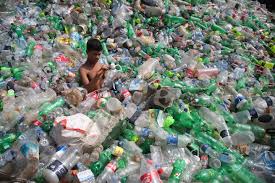
The transition to an economy with less single-use plastic is being driven by a number of innovative initiatives and practical examples that demonstrate the feasibility and benefits of reducing and reusing. These actions, ranging from the individual to the corporate and government level, are crucial to changing the narrative of linear consumption and promoting a more sustainable future. At the individual level, the adoption of reuse kits has become a symbol of the anti-plastic movement. Carrying a reusable water bottle, a coffee mug, bamboo or metal cutlery, and fabric shopping bags are simple habits that, when adopted by millions, have a significant impact on reducing demand for single-use plastics [69]. In addition, the growing popularity of personal hygiene and cleaning products in bars or refills, such as shampoos, conditioners, soaps and detergents, eliminates the need for disposable plastic packaging, promoting a more conscious consumption and less waste generator [70].
In the food and beverage sector, innovation in reuse systems is gaining momentum. Companies are experimenting with returnable packaging for products such as milk, yogurt, juices, and even ready meals. The model is simple: the consumer pays a small deposit for the packaging, which is returned after use to be cleaned, sanitized and refilled. This system, which was once common in the past for glass bottles, is being reinvented with modern technologies for efficient tracking and logistics [71]. Coffee shops and restaurants are also encouraging the use of reusable cups and containers by offering discounts or loan systems, which not only reduces waste but also creates a more engaged consumer experience. The proliferation of **bulk stores** is another practical example of reduction at source. In these establishments, consumers can bring their own containers to buy food, cleaning products, and personal care products without packaging, eliminating waste and often saving money [72].
At the corporate level, major brands are starting to redesign their packaging and invest in reuse systems. Unilever, for example, has been exploring refill models for its cleaning and beauty products in several markets, and Nestlé has been testing returnable packaging for ice cream and other products in partnership with reuse platforms [73]. These initiatives by major players in the market are crucial as they demonstrate economic viability and consumer acceptance for more sustainable business models. In addition, cross-company collaboration, such as the **Loop** initiative (mentioned earlier), which brings together diverse brands under a returnable packaging system, shows the power of cooperation to scale reuse solutions [74].
Governments and cities are also playing a key role in promoting reduction and reuse through public policies. The implementation of plastic bag taxes has been effective in drastically reducing plastic bag consumption in many places, encouraging consumers to adopt reusable bags [75]. The creation of refilling infrastructure in public spaces, such as drinking fountains and water refill stations, facilitates the adoption of reusable bottles. In addition, some cities are exploring the implementation of deposit-refund systems for bottles and cans, which increases collection and reuse rates, and reduces improper disposal [76]. These practical examples and initiatives demonstrate that reduction and reuse are not just ideals, but concrete and effective strategies that are shaping a future with less plastic and more sustainability. The dissemination of these practices and the continued support for innovation in this field are essential to accelerate the transition to a truly circular economy.
Chemical Recycling Technologies in Detail: A Leap to Plastic Circularity
Chemical recycling represents a significant step forward in the quest for a circular economy for plastic, overcoming many of the limitations inherent in mechanical recycling. Rather than simply reprocessing plastic into its polymeric form, chemical recycling deconstructs it into its basic molecular components, allowing for the creation of new virgin-quality materials and dramatically expanding the range of plastics that can be recycled. There are several technological routes within chemical recycling, each with its own particularities and ideal applications. Pyrolysis, for example, is one of the most versatile and widely studied technologies. It involves heating the plastic waste in the absence of oxygen, resulting in the breakdown of the polymer chains into smaller molecules, mainly oils (known as pyrolysis oil or bio-oil), gases, and a carbonaceous solid waste [77]. Pyrolysis oil can be refined and used as a raw material for the production of new plastics, fuels, or chemicals. This technology is particularly effective for mixed and contaminated plastics, which are difficult to mechanically recycle, such as plastic films and multi-layer packaging [78]. Companies such as BASF and Sabic are investing large-scale in pyrolysis plants to turn plastic waste into feedstock for their petrochemical operations, demonstrating the commercial viability of this approach [79].
Gasification is another thermochemical route that converts plastic waste into a syngas, a mixture of hydrogen and carbon monoxide, which can be used to generate electricity, heat, or as a building block for the synthesis of new chemicals and fuels [80]. Gasification operates at higher temperatures than pyrolysis and is suitable for a wide range of plastic waste, including those with a high impurity content. While the main focus is on the production of energy or chemicals, the process can also generate a carbon-rich solid waste that in some cases can have similar applications to BioChar [81].
Depolymerization technologies are more specific and aim to break down polymers into their constituent monomers, which are the basic units from which plastics are formed. Sololysis, for example, uses solvents to selectively dissolve the polymer and then precipitate or depolymerize it into pure monomers. This technique is particularly effective for plastics such as PET (polyethylene terephthalate), which is widely used in bottles, allowing the recovery of high-purity monomers that can be repolymerized into virgin PET [82]. Hydrolysis and glycolysis are variations of sololysis that use water or glycols, respectively, to break polymeric bonds. The advantage of depolymerization is the ability to produce recycled plastics with the same properties and performance as virgin plastics, which is crucial for high-value applications and to close the material loop effectively [83]. Companies such as Jeplan in Japan and Ioniqa in the Netherlands are examples of players that are scaling depolymerization technologies for PET.
In addition to these, recycling by dissolution is an emerging technology that involves selectively dissolving a polymer in a solvent, separating it from other plastics and impurities, and subsequently recovering the pure polymer. This approach holds promise for plastics such as polystyrene (PS) and polypropylene (PP), which are challenging to mechanically recycle due to their complexity and contamination [84]. PureCycle Technologies, for example, is developing a recycled polypropylene purification technology that promises to produce virgin-quality resin from waste [85].
These chemical recycling technologies, while still facing challenges in terms of scalability and costs, represent a qualitative leap forward in plastic waste management. They offer the ability to recycle plastics that were previously considered “non-recyclable”, to produce high-quality recycled materials that can replace virgin plastic in a wide range of applications, and to significantly reduce the carbon footprint of the plastics industry. Continued investment in research and development, along with incentive policies and collaboration between industry, governments, and academia, are essential for these technologies to reach their full potential and effectively contribute to a robust and sustainable circular economy for plastics.
The Cutting Edge of Alternative Materials: Beyond Conventional Plastic
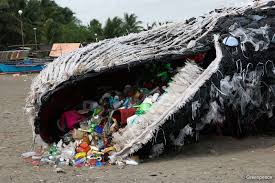
The search for alternatives to conventional plastic has driven a flurry of innovation in the field of materials, with scientists and engineers exploring new compositions and processes to create substitutes that are functional, cost-effective and, above all, environmentally benign. This cutting edge of alternative materials is not just limited to bioplastics, but encompasses a diverse range of solutions that seek to mimic the properties of plastic while also addressing its environmental shortcomings. A notable example is bio-based polymers, which are synthesized from renewable resources such as sugars, starches, vegetable oils, and cellulose, rather than fossil fuels [90]. While not all bio-based polymers are biodegradable, their renewable origin contributes to the reduction of the carbon footprint and dependence on non-renewable resources. Polymers such as green polyethylene (green PE), produced from sugarcane, have the same properties as conventional PE, but with a significantly lower environmental impact [91].
In addition to the more well-known bioplastics, such as PLA and PHA, research is advancing the development of polymers from marine sources, such as those derived from algae and chitosan (a polysaccharide found in crustaceans) [92]. These materials exhibit interesting properties such as biodegradability in marine environments and film-forming capabilities, making them promising for packaging food and other single-use products that often end up in the oceans. Nanocrystalline cellulose (CNC) and microfibrillated cellulose (MFC), extracted from plant waste, are other examples of bio-based materials being explored. With high mechanical strength and barrier properties, these nanomaterials can be incorporated into packaging to improve their functionality and reduce the need for plastics [93].
Another area of innovation is the development of compostable materials in the home environment. Many existing bioplastics require specific industrial composting conditions to degrade completely. Creating materials that decompose in home composters or even in soil and water, without leaving toxic residues, is a crucial goal for circularity. Researchers are exploring natural polymers, such as starch and lignin, and combining them with biodegradable additives to create packaging and products that return to nature safely.
Production and Design Technologies for Sustainability
Innovation in materials is complemented by advances in production and design technologies. **3D printing**, for example, is being used to create prototype packaging and products with designs optimized for material reduction and ease of recycling or reuse [95]. In addition, 3D printing with recycled plastics is gaining ground, turning waste into new products of value. Artificial intelligence and machine learning are being applied in material design, enabling the simulation of properties and the development of new compositions more quickly and efficiently, accelerating the discovery of alternatives to plastic [96].
The concept of **design for disassembly** is fundamental to the circular economy. By designing products in such a way that their components can be easily separated and recovered at the end of their useful life, recycling and reuse of materials is facilitated. This contrasts with the current design of many products, which are made from multiple complex materials that are difficult to separate, making recycling unfeasible [97]. Collaboration between designers, materials engineers, and recycling experts is essential to incorporate these principles from the earliest phases of product development.
Finally, innovation in delivery systems and business models is just as important as innovation in materials. The proliferation of refill systems, returnable packaging, and subscription services that deliver products in reusable packaging demonstrates a paradigm shift from the consumption of products to the consumption of services [98]. These innovations, combined with the development of alternative materials and advanced recycling technologies, offer a promising path to decouple our economic growth from the production and overconsumption of plastic, building a future where sustainability is intrinsic to the design and functionality of everything we produce and consume.
Challenges in Policy Implementation and the Urgency of the Global Treaty
Despite advances in public policymaking and growing awareness of the need for global agreements, the effective implementation and scale of these initiatives still face considerable challenges. One of the main obstacles is **regulatory fragmentation**. The absence of a harmonized approach at the global level results in a mosaic of legislation and standards, which makes it difficult for multinational companies to act and manage plastic waste across borders [99]. This lack of uniformity can create “pollution havens” where regulations are more lenient, allowing the production and improper disposal of plastic to continue. In addition, the strength of the plastics industry and sectors that rely heavily on single-use packaging is a significant factor. Lobbying these industries can delay or dilute the implementation of stricter policies, arguing about the economic costs and job losses, even though the transition to a circular economy can generate new opportunities and long-term benefits [100].
Another challenge lies in the **capacity to monitor and enforce** existing laws. Many developing countries, which are disproportionately affected by plastic pollution, lack the resources and infrastructure to monitor and enforce regulations. Corruption and lack of transparency can also undermine efforts to combat illegal plastic disposal. Inadequate waste management in many parts of the world is a chronic problem that policies alone cannot address without substantial investments in collection, sorting, and recycling infrastructure. The lack of access to garbage collection services, especially in rural areas and low-income communities. income, means that a large amount of plastic never reaches a formal management system, ending up in the environment.
In this context, the negotiation of a legally binding international treaty on plastic pollution emerges as a historic opportunity and an urgent necessity. The treaty, which is being negotiated under the aegis of the United Nations Environment Programme (UNEP), aims to create a global framework to address the problem of plastic throughout its life cycle, from production to disposal [102]. By establishing common goals and obligations for countries, the treaty can overcome regulatory fragmentation and create a more equitable playing field for the industry. It can also drive innovation in sustainable materials and technologies, promote the circular economy, and provide technical and financial assistance to developing countries, empowering them to implement effective solutions [103].
Key points under discussion in the treaty include **reducing the production of virgin plastic**, **promoting reuse and recycling**, **eliminating problematic and unnecessary plastics**, **waste management and environmental remediation**, and **transparency and accountability** throughout the plastic value chain [104]. The urgency to finalise this treaty by the end of 2024 reflects the severity of the crisis and the need for coordinated global action. The success of the treaty will depend on the political will of member states to negotiate an ambitious and comprehensive instrument that goes beyond mere declarations of intent and sets out a clear path to a future without plastic pollution. Civil society pressure and public awareness will be key to ensuring that governments live up to their commitments and work together to protect our planet from the growing threat of plastic.
Circular Economy and Technological Innovation Initiatives
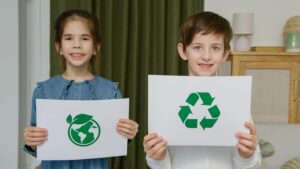
In addition to cleaning efforts and changes in consumer habits, innovation in circular economy models and the development of new technologies are paving the way for a future with less plastic. The Ellen MacArthur Foundation has been a driving force in promoting the circular economy for plastic, collaborating with businesses, governments, and academia to redesign the plastics system. Its New Plastics Economy Global Commitment initiative brings together hundreds of signatories, including major brands and retailers, who commit to eliminating problematic and unnecessary plastics, innovating so that all plastics are reusable, recyclable or compostable, and circulating all plastics they use [105]. The Foundation’s annual reports demonstrate the progress and challenges faced by signatories, encouraging transparency and accountability.
In the field of technological innovation, the company **Carbios**, in France, has developed a revolutionary enzyme technology to recycle PET plastics. Using optimized enzymes, Carbios is able to depolymerize PET into its original monomers within a few hours, even colored, opaque or multilayer plastics that are difficult to mechanically recycle [106]. The resulting monomers can be used to produce virgin-quality PET, creating a truly closed loop for this type of plastic. This technology has the potential to transform the PET recycling industry, allowing a much wider range of waste to be recycled and reducing reliance on virgin oil.
Another inspiring example comes from Adidas, which in partnership with Parley for the Oceans, has been turning plastic taken from the oceans into high-value products such as sneakers and sportswear. This collaboration not only removes trash from the marine environment, but also creates a demand for recycled plastic, encouraging collection and reprocessing. The initiative demonstrates how innovation in product design and collaboration between different sectors can generate value from waste and inspire consumers to make more sustainable choices.
In Brazil, Braskem, one of the largest producers of thermoplastic resins in the Americas, has invested in circular economy solutions, including the development of green polyethylene resins, produced from sugarcane, and the increase in the supply of post-consumer recycled resins [108]. The company has also participated in chemical recycling projects and the development of new technologies for the recovery of plastic waste, demonstrating the industry’s commitment to seeking solutions to the plastic problem.
These case studies and successful initiatives, ranging from cleaning up the environment to innovating materials and business models, are beacons of hope in the fight against plastic pollution. They show that with investment in research and development, collaboration between different actors, and a genuine commitment to sustainability, it is possible to turn the plastic challenge into an opportunity to build a cleaner, more circular, and prosperous future for all.
The Vision of a Future Without Plastic Pollution: A Call to Collective Action

The vision of a future without plastic pollution is not a chimera, but an achievable goal that requires unwavering commitment and unprecedented collective action. This article has outlined the complexity of the plastic crisis, but it has also illuminated the promising paths being taken to overcome it. The transition from a linear economy to a circular economy, where plastic is valued as a resource and kept in use for as long as possible, is at the heart of this transformation. This implies a fundamental redesign of how we produce, consume and manage materials, with the elimination of waste and pollution as guiding principles.
To realize this vision, it is imperative that all sectors of society take their share of responsibility. Governments must lead with ambitious policies that encourage reduction, reuse, and recycling, and that establish a clear and harmonized regulatory framework. The global treaty on plastic pollution is a historic opportunity to create such a governance structure, establishing binding targets and implementation mechanisms that drive action on a global scale. The industry, in turn, must embrace innovation and eco-design, developing products and packaging that are inherently sustainable, easy to recycle, and fit into business models based on reuse. Investment in research and development of alternative materials and advanced recycling technologies is key to accelerating this transition.
And, crucially, each individual has a role to play. Daily consumption choices, no matter how small they may seem, add up to create a significant impact. Opting for products with less packaging, reusing whenever possible, correctly separating waste for recycling, and supporting companies and initiatives that demonstrate commitment to sustainability are powerful actions that contribute to change. Environmental awareness and education are essential tools for empowering consumers to make informed choices and become active advocates for a future without plastic pollution. Pressure from civil society, through movements and organizations, is vital to hold governments and industry accountable, ensuring that promises translate into concrete actions.
The future of a planet without plastic pollution is a future where the oceans are clean, wildlife thrives, human health is protected, and resources are managed intelligently and regeneratively. It’s a future where innovation serves sustainability, and where collaboration transcends borders to solve global challenges. The journey will be long and will require persistence, but the urgency of the crisis and the potential for a cleaner, healthier future are powerful motivations. With a collective commitment and a shared vision, we can turn the threat of plastic into an opportunity to build a legacy of sustainability for generations to come, ensuring that the blue of our oceans and the green of our lands remain vibrant and free of plastic waste.
Circular Economy and Technological Innovation Initiatives (Continued)
In addition to the examples already mentioned, the global landscape of initiatives to combat excess plastics is rich and diverse, ranging from the development of new materials to the implementation of disruptive business models. Electric car manufacturer Polestar, for example, has been exploring the use of recycled and bio-based materials in its vehicles, such as the use of cork and recycled PET bottles inside, and the development of a linen-based material to replace conventional plastics [109]. This approach demonstrates how the traditionally plastics-intensive automotive industry can innovate to reduce its environmental footprint.
In the packaging sector, the company **PulPac**, from Sweden, has developed a dry fibre moulding technology that allows the production of paper and fibre packaging with the same functionalities as plastic, but with a significantly lower environmental footprint [110]. This technology offers a scalable alternative for the production of cups, trays, and other single-use items, reducing reliance on plastics. **Notpla**, a British startup, is at the forefront of developing edible and biodegradable packaging made from seaweed. Its products, such as Ooho water bubbles, which encapsulate liquids and can be consumed or degrade naturally, represent an innovative solution to the problem of single-use packaging at events and on-the-go consumption [111].
Another promising field is that of bioremediation and biodegradation of plastics. Scientists around the world are researching microorganisms and enzymes capable of degrading plastics, offering a biological solution to the pollution problem. The discovery of bacteria that feed on PET, such as *Ideonella sakaiensis*, has opened up new perspectives for biological recycling [112]. Although these technologies are still in the research and development phase, they represent a future potential to deal with plastic that is already in the environment and to create more sustainable recycling processes.
In the context of policy and governance, the Global Alliance to End Plastic Waste (GPAP), a public-private partnership led by the World Economic Forum, has been working to accelerate the transition to a circular plastic economy in developing countries [113]. Through collaborations with governments, businesses, and civil society, GPAP implements pilot projects, develops national roadmaps, and facilitates investment in waste management and recycling infrastructure. These initiatives demonstrate the importance of multisectoral collaboration to address a challenge as complex as plastic pollution.
Finally, the growing awareness and engagement of celebrities and digital influencers have also amplified the message about the plastic crisis. Campaigns such as the #PassOnPlastic and support for organisations such as the Ocean Conservancy and WWF have mobilised millions of people around the world, turning environmental concern into concrete action [114]. These examples, while diverse in their nature and scale, share a common thread: the belief that it is possible to turn the tide of plastic pollution through innovation, collaboration, and a collective commitment to sustainability. They serve as a powerful reminder that even in the face of such a monumental challenge, the human capacity to innovate and adapt can guide us to a cleaner, healthier future.
The Role of Startups and Local Innovation
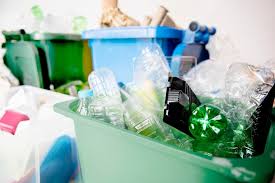
In addition to large corporations and global initiatives, a vibrant ecosystem of local startups and innovations is emerging, offering creative and scalable solutions to the plastic problem. These small and medium-sized enterprises, often driven by a strong environmental purpose, are filling gaps in the market and developing disruptive approaches to reducing, reusing, and recycling plastics. One notable example is ByFusion, a company that has developed a technology to turn non-recyclable plastics into modular building blocks, called RePlastic. These blocks can be used in building construction, offering a solution to plastic that would otherwise end up in landfills or the environment [115]. ByFusion’s technology is capable of processing both mixed and contaminated plastics, which makes it particularly valuable for dealing with the most challenging types of waste.
Another innovative startup is Plastic Energy, which uses pyrolysis technology to convert mixed plastic waste into a synthetic oil (TACOIL) that can be used as a feedstock for the production of new virgin plastics [116]. This “plastic to plastic” approach is key to closing the material loop and reducing reliance on fossil fuels. Plastic Energy already has operating plants in Spain and is expanding its operations globally, demonstrating the commercial viability of large-scale chemical recycling.
In Brazil, local initiatives are also flourishing. **Boomera**, for example, is a company that operates in the reverse logistics and recycling of post-consumer packaging, including those that are difficult to recycle, such as flexible and multilayer packaging [117]. Boomera develops customized solutions for businesses, ensuring that their waste is collected and turned into new products, contributing to the circular economy. Another Brazilian initiative is **Muda Meu Mundo**, which connects cooperatives of waste pickers with companies and consumers, promoting the appreciation of waste pickers’ work and increasing recycling rates [118]. These digital and logistical platforms are crucial for optimizing the recycling value chain and ensuring that more plastic is diverted from landfills and dumps.
The emergence of innovation labs and incubators focused on plastic solutions is also a promising sign. These spaces provide technical, financial, and mentoring support for startups and researchers who are developing new technologies and business models. Collaboration between universities, research centers, and the private sector is key to accelerating the transition from promising ideas to scalable and impactful solutions. In addition, the growing awareness of the plastic problem has led to an increase in venture capital investment in clean technology and circular economy companies, which is essential to drive innovation and the expansion of these solutions [119].
These examples of local startups and innovations demonstrate that the solution to the planet’s excess plastics will not come from a single source, but from a combination of efforts at all scales. The agility and experimentation of startups, combined with the power of scale of large corporations and the support of public policies, are the key to building a future where plastic is a valued resource and not a threat to our planet. Continued promotion and support for such initiatives is essential to accelerate the transition to a truly circular and sustainable economy.
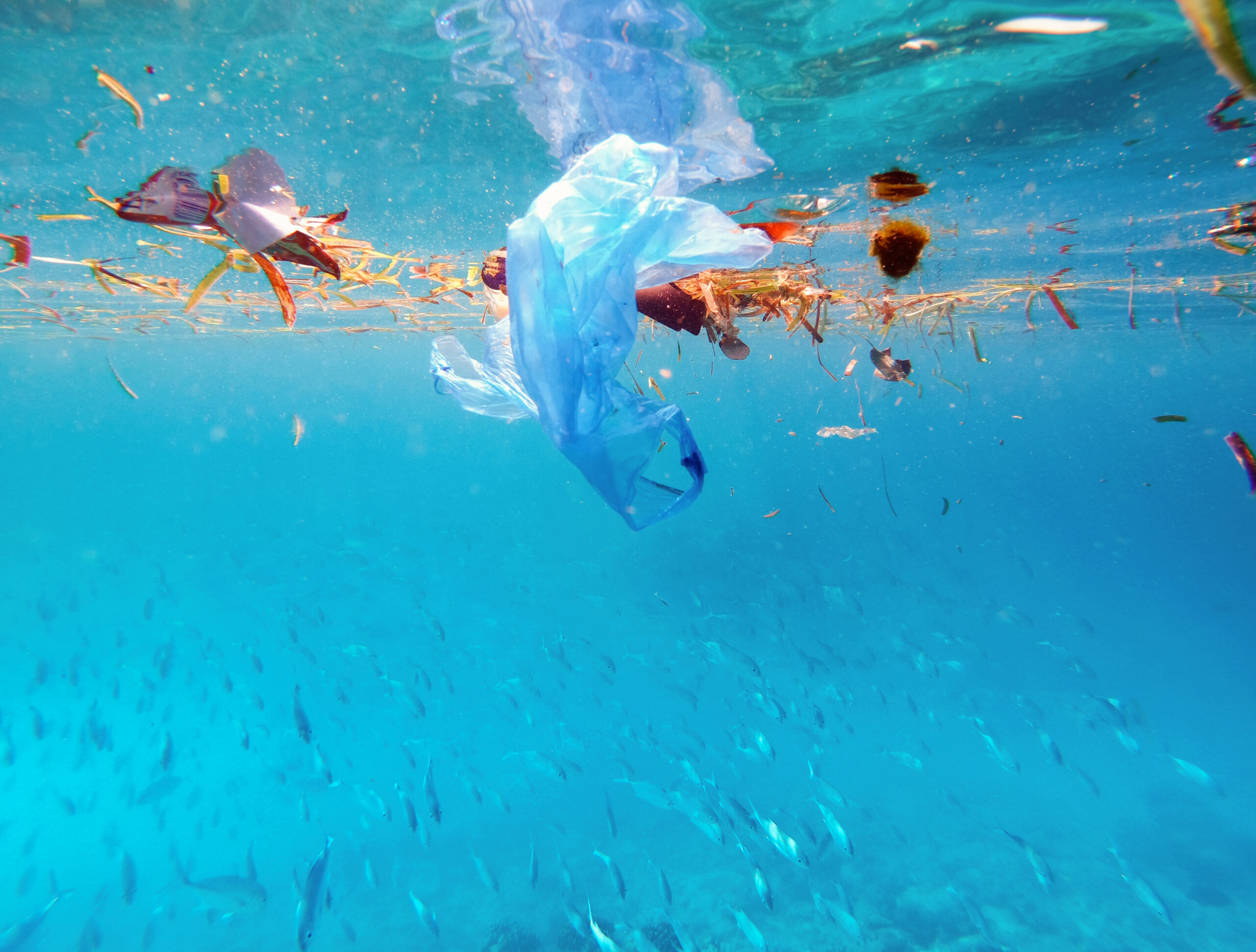
Sem comentários